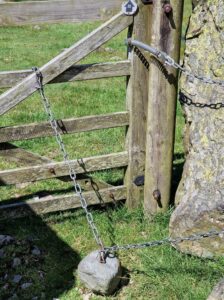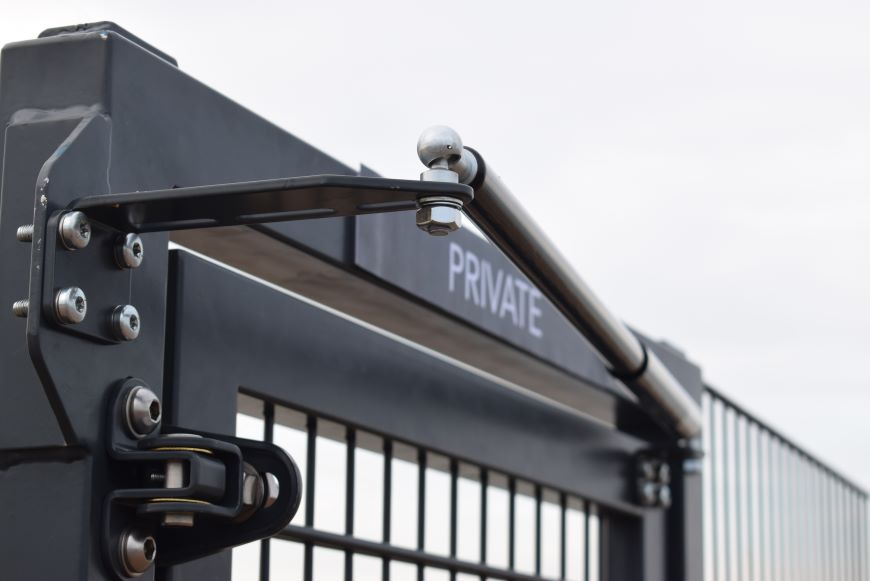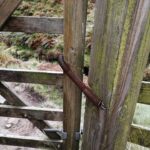There are many reasons why you might want to have an automatic soft closing gate. You might want to make sure your gate is always closed for security reasons, ensure the safety of your children, or prevent it from swinging around in the wind. Introducing a soft close on your gate can also make it safer and help protect the gate frame.
The gate closer you choose, depends on your needs and your gate. As with most gate hardware, there are several gate closing mechanisms out there. To find out which one you need it helps to understand the basics.
Read along as we dive into the world of gate closure including how a gate closer works, the different types of gate closers out there and which ones offer a soft close.
Controlled soft closing gates
One of the first things to know is the difference between an uncontrolled versus a controlled gate closer.
When we talk about a controlled gate closer, we refer to a gate closer that has a dampened, soft close. This means that the gate won’t just slam shut but will do so at a speed suitable for the size of the gate opening. You have probably come across a controlled gate closer on public gates or external security doors.
There are many benefits to a soft close gate, some being:
- A controlled gate closer stops a gate from slamming as it controls the speed of the close
- It will protect your gate frame by decreasing the impact of the closing gate
- Depending on the speed of the close, it gives you enough time to walk through without the risk of the gate swinging round and hitting you or trapping fingers
- It prevents the gate from opening too quickly (especially on windy days) which can lead to injuries
In the below video, you can see the soft gate closure of a gate with a Gatemaster Gas Strut Closer.
How does a gate closer work?
All types of gate-closing mechanisms will shut your gate, but the way they do it depends on the type of closer.
How do gravity hinges work?

One of the simplest ways to close a gate is to use gravity. In the UK, it is often seen on gates on countryside walks and consists of a weighted object and a chain or rope.
The chain is attached to the gate post and the gate by the hinges. In the middle of the chain, the weighted object will be placed. When you open the gate, the chain will tighten and lift up the weight. Once let go, the weight will drop towards the ground, drawing the chain down which will in turn close the gate.
Another gravity hinge you will likely come across on a country walk is an offset hinge. By offsetting the bottom hinge, the gate swings open on an angle, naturally allowing the gate to swing back into position when closing.
These are typically not controlled gate closers as there isn’t a mechanism in place to soften the close. There is therefore a risk of the gate closing too quickly and injuring the person walking through it.
How do gate spring closers work?
Spring closers (or gate springs) are a simple and efficient form of gate closure. You attach a spring to the gate and gate post which, when tightened, will pull the gate shut when let go. This is a common solution and is seen on many gates, such as the below.
Although efficient, they may however shut your gate quite quickly depending on the spring tension. Spring closers don’t have a controlled close, meaning it will just shut without any speed reducing. A spring closer on a pedestrian gate can cause injuries if they slam a child or person in the back. We therefore recommend that you check out the specific recommendations for gate closers in areas used frequently by children, a topic we cover in more detail here.
How do hydraulic closers work?
For controlled closers, hydraulic closers are a good choice. Using the principles of hydraulic systems, a hydraulic closer uses liquid pressure to create a softer, dampened close. It is a simple as that: when you open the gate, the liquid is pressurised within the mechanism. When you let go of the gate again, the liquid will “release” slowly within and create a soft closing gate.
The benefit of a hydraulic system is that you get a controlled soft closing gate and often, it is adjustable too. The Gatemaster Hydraulic Gate Closer (APS and APSSTOP) actually has both adjustable closing and latching speed, making it a RoSPA compliant closer. The APS is therefore our recommendation for creating safe self closing playground gates.
In the below video you can see the closing and latching speed of the APS, both of which can be adjusted.
How do gas struts work?
Another option for pedestrian gate closer is a gate closing gas strut. These slender gate closers use an internal dampener to create the soft, controlled close. Although they might sound similar to hydraulic closers, gas struts use compressed gas to operate the actual closing of the gate, whereas the hydraulic closer uses an internal spring. If you are looking for an unobtrusive and reliable gas strut closer, we recommend having a look at the GSB shown below.
How do automated gate closers work?
Automated gate closers are controlled electrically, which can give you a lot of options for the control of your gate. Often these closers are used in conjunction with a fully electronic system which could be controlled remotely, for example you could open them from your phone or a fob.
These closers are a more costly option and would normally be used on driveway gates as opposed to pedestrian gates. In addition, these closing mechanisms can be tricky because they require electricity which can also be an added cost.
How to make your gate close slowly
Gate closers are an excellent way of ensuring your next gate has a soft close. As we have covered above, not all gate closer guarantee this. If you are looking to have a soft closing gate, you need to ensure the chosen gate closer has a controlled close. Here at Signet Locks, we would recommend using one of the following types if you are after that soft gate close:
- Gas strut gate closer
- Hydraulic gate closer
- Automated gate closer (seek more advice from a specialist)
It’s important to remember that before you buy your gate closer, you should make sure it is suitable for the size, weight and style of gate you have. We always recommend seeking advice from the manufacturer or supplier on your specific needs.
Get in touch to discuss your specific soft closing gate needs:
Call +44 (0) 1243 552 066 or email us at sales@signetlocks.co.uk now.





We need a gate closer (soft close) for the metal gates to our property. The gates are wide enough to let a car through. The gates are faced with metal sheets with the result that on a windy day they slam, which is both dangerous and damages the gates.
It looks like we need a gas strut closer for each gate leaf. What closer would you recommend for the size weight and style of our gates?
Hi Peter, thanks for your question! In order for us to suggest a suitable gate closer, we ideally need to know the width and weight of the gate leaves. Please could you send it to sales@signetlocks.co.uk and we can suggest a solution for you. Thanks, Veronika from Signet Locks